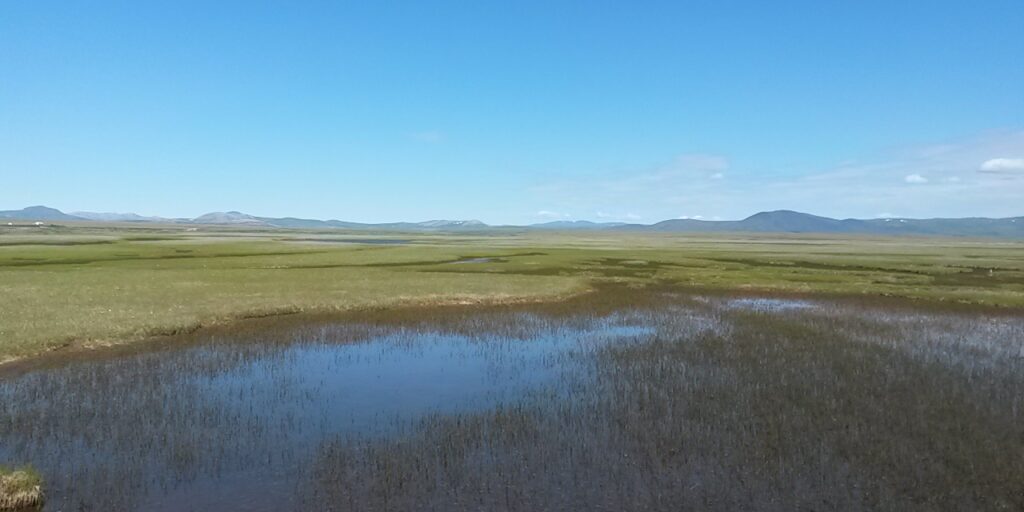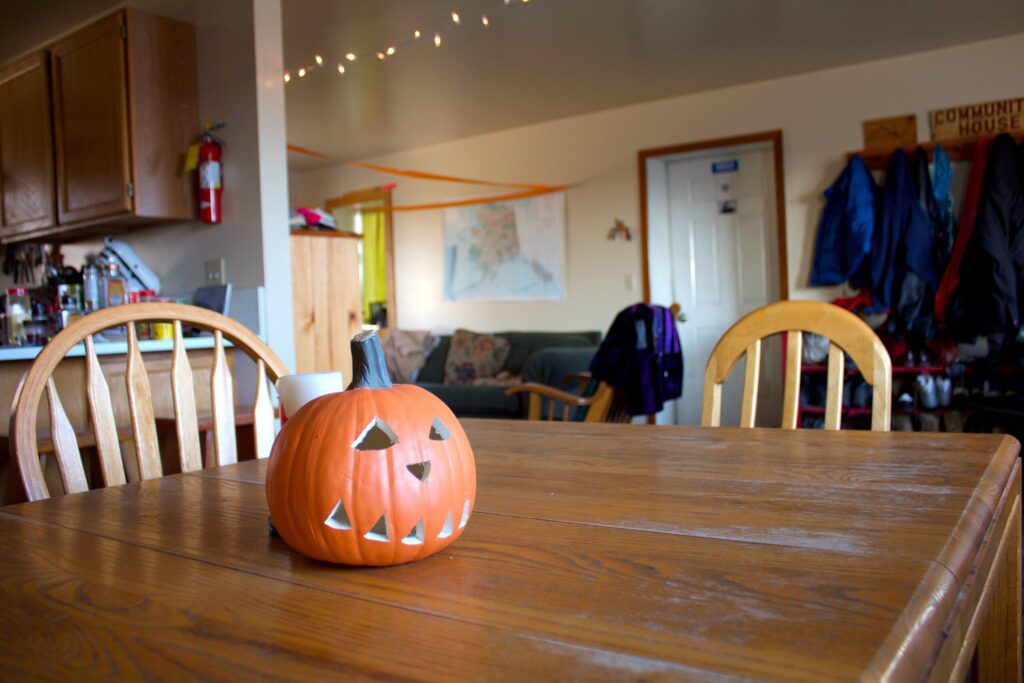My first impression of Nome was from the sky.
As our plane circled around Nome’s outer limits, I saw lush, green rolling fields gently carved into by large swathes of brilliant blue water. As Lauren states in her recollection of the landscape (heard above in our audio blog) the tundra seemed deceptively quiet and bare – hiding even the largest of animals from us – at first! Ever since then, I’ve seen a bounty of owls, plenty of muskoxen, a small kit fox, two moose and, for Tyler, a bear perhaps a little too close for comfort. Having been here for a few weeks now, the unique environment of the tundra landscape of Western Alaska has impressed upon me deeply.
The environment of Western Alaska seems to flow endlessly and seamlessly into each other. Seemingly flat flood plains are actually made out of bouncy and spongy turf, their uneven micro-hills mimicking the rolling hills and valleys that reach beyond the water’s edge. And, on a good visibility day, those hills stand proudly against their brethren craggy mountains in the near distance, with permanent snow dusting their tall peaks.
Even while traveling across the Seward Peninsula (where Nome resides), the environment changes dramatically. I’ve been fortunate enough to travel to Council, a village about 75 miles from Nome, twice now, and each time the tree line starts, it takes my breath away. After adjusting to the seascape and the bare, low-lying vegetation of the tundra, it’s a sight to behold. I highly recommend listening to Mitch Borden and Laura Kraegel’s journey to Council on the August episode of Dearest Alaska, for an audio-rich portrayal of that journey, too!
For this week’s audio blog, I was curious as to what stood out about the Western Alaskan environment to my fellow volunteers, and I wasn’t disappointed. We discussed animal encounters, outdoors activities, and much more. You’ll have to listen to hear a tiny sliver of what this region has to offer!







